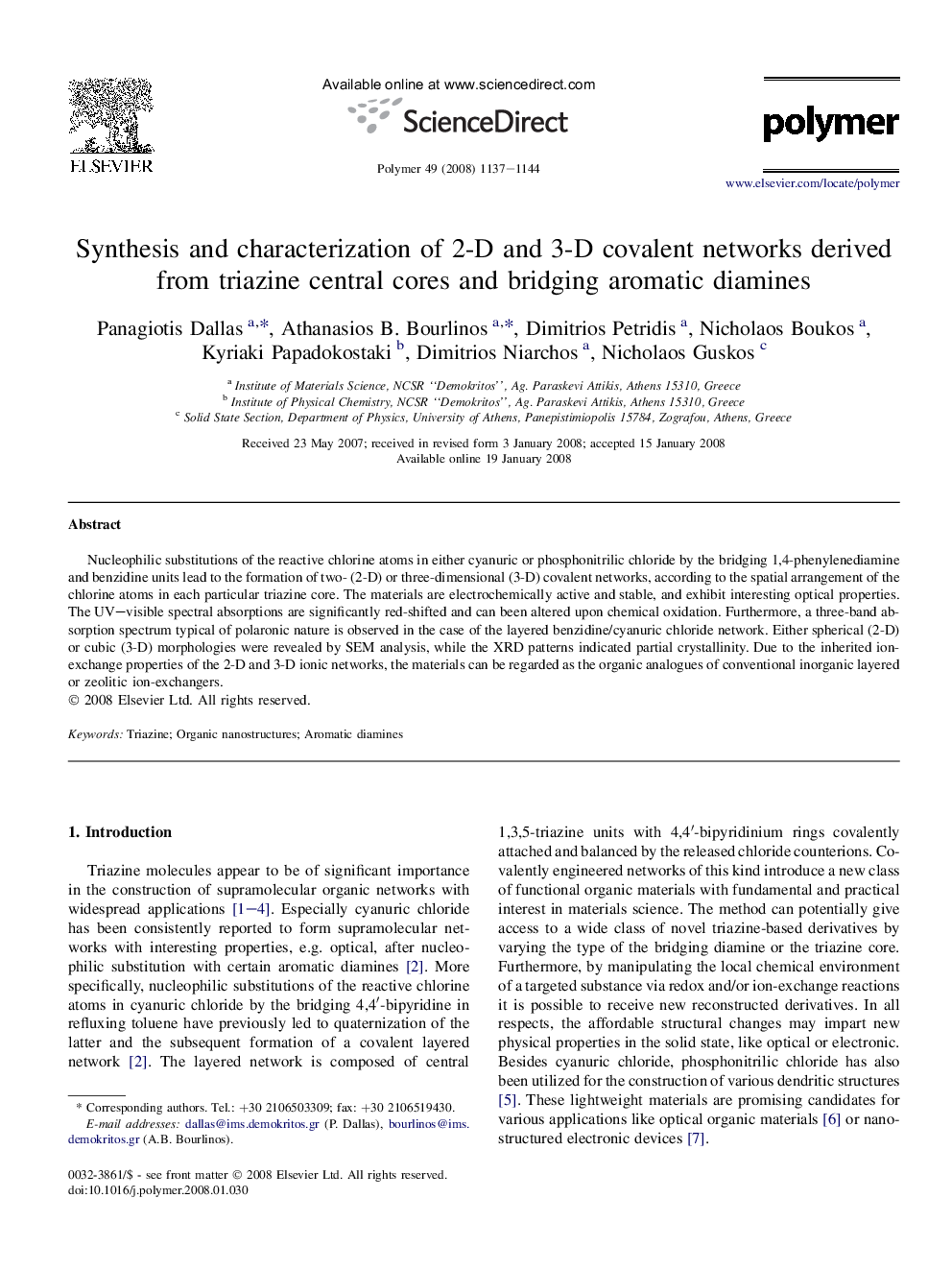| Article ID | Journal | Published Year | Pages | File Type |
|---|---|---|---|---|
| 5188044 | Polymer | 2008 | 8 Pages |
Abstract
Nucleophilic substitutions of the reactive chlorine atoms in either cyanuric or phosphonitrilic chloride by the bridging 1,4-phenylenediamine and benzidine units lead to the formation of two- (2-D) or three-dimensional (3-D) covalent networks, according to the spatial arrangement of the chlorine atoms in each particular triazine core. The materials are electrochemically active and stable, and exhibit interesting optical properties. The UV-visible spectral absorptions are significantly red-shifted and can been altered upon chemical oxidation. Furthermore, a three-band absorption spectrum typical of polaronic nature is observed in the case of the layered benzidine/cyanuric chloride network. Either spherical (2-D) or cubic (3-D) morphologies were revealed by SEM analysis, while the XRD patterns indicated partial crystallinity. Due to the inherited ion-exchange properties of the 2-D and 3-D ionic networks, the materials can be regarded as the organic analogues of conventional inorganic layered or zeolitic ion-exchangers.
Related Topics
Physical Sciences and Engineering
Chemistry
Organic Chemistry
Authors
Panagiotis Dallas, Athanasios B. Bourlinos, Dimitrios Petridis, Nicholaos Boukos, Kyriaki Papadokostaki, Dimitrios Niarchos, Nicholaos Guskos,
